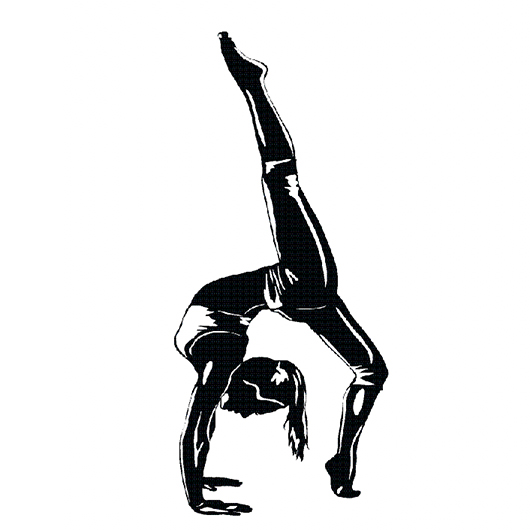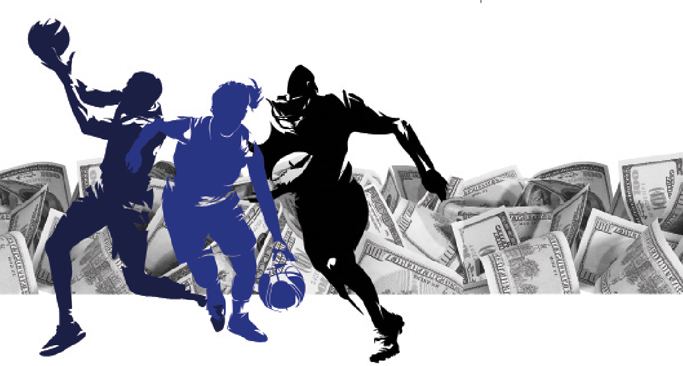Navigating name, image, and
likeness (NIL) in collegiate sports
By Tim Smith and Matthew Ferraro
It’s no secret that the NCAA’s amateurism model is destined to go the way of landline telephones and paper road maps. Shout it from the rooftops: Pay for play is here, and the transfer portal and name, image, and likeness (NIL) collective system have brought free agency.
Earlier this year, the Boston Globe put it like this: “For many prospects these days, a promise of good football and a great education isn’t as sexy as a big-time NIL deal.” Players may very soon be considered employees, as witnessed by the recent unionization efforts at Dartmouth College.
As insurance advisors, it’s imperative to navigate this evolving terrain to safeguard the interests of your collegiate athlete clients.
While the influence of unionization on Dartmouth, a relatively small institution in comparison to others today, may not significantly alter the landscape of NIL regulations, its broader implications for larger universities could be profound. We’re witnessing firsthand the ripple effects of NIL rulings on various colleges, suggesting that the collective impact could be seismic, especially for major players in collegiate athletics.
The emergence of NIL deals
It wasn’t a single event that started the ball rolling, but a combination of legal challenges, state-level legislation, and mounting public pressure that led to the emergence of NIL deals. Pressure from athletes and families and media attention focused on the financial disparity between the billions generated by the NCAA and the lack of compensation for athletes.
As a result, on September 30, 2019, California became the first state to pass a law allowing college athletes to be paid for use of their names, images and likenesses (NIL), and it was called “the beginning of a national movement.” However, NCAA officials had a different label, using words like “harmful,” “unconstitutional” and an “existential threat” to college sports.
It’s not shocking, considering that prior to this shift, the NCAA maintained stringent regulations prohibiting college athletes from receiving compensation for endorsements, autographs, and similar activities. However, recent data paints a different picture, suggesting that the NCAA’s concerns may have been exaggerated.
In 2023, Ohio State University boasted an annual athletics revenue of $204 million, with an impressive $90 million attributed solely to football. When factoring in that approximately 20 other schools each generated at least $125 million annually from athletics, it’s unlikely that anyone will be starting a GoFundMe campaign for the NCAA.
The evidence is there:
- Angel Reese (LSU Women’s Basketball): Endorsed by Reebok, McDonald’s PlayStation, Coach ($1.7 million)
- Jared McCain (Duke Basketball): Endorsed by Skims, Crocs, Recover 180 ($1.1 million)
- Shedeur Sanders (Colorado Football): Endorsed by Gatorade, Mercedes-Benz, Under Armour ($4.5 million)
- Livvy Dunne (LSU Gymnastics): Endorsed by Nautica, Omaha Productions, Leaf Trading Cards ($3.5 million)
NIL deals, coupled with the prevalence of player transfers, signify significant stakes that demand safeguarding. For instance, Nebraska coach Matt Rhule once remarked that a talented quarterback in the transfer portal could command anywhere from $1 million to $2 million in today’s market. This underscores the importance of protecting these investments.
Given the substantial amount of money in play, there is a growing need for advisors to protect their athlete clients in regard to NIL deals.
This year’s Heisman Trophy finalists provide a striking example of this trend, with quarterbacks Bo Nix of Oregon, Michael Penix Jr. of Washington, and Jayden Daniels of LSU all being transfers. Additionally, last year’s winner, USC’s Caleb Williams, also followed a similar path.
Notably, college basketball and football are leading the charge in this arena, largely due to the immediate impact top stars can make upon entering the scene. In contrast, college baseball players typically undergo a more prolonged development period before transitioning to Major League Baseball.

Structure of NIL deals
A number of elements come into play when looking at these deals.
Compensation:
- Performance based. Often tied to specific activities, like social media posts, appearances, or autograph signings. Athletes are compensated per post, appearance, etc.
- One-time payments. A fixed amount paid upfront for a specific service, like a product endorsement campaign.
- Multi-year contracts. Similar to traditional endorsement deals, athletes receive ongoing compensation over a set period.
Services:
- Social media promotion. Posting about the brand on platforms like Instagram and X (formerly Twitter).
- Public appearances. Attending events, signing autographs, or participating in meet-and-greets.
- Content creation. Collaborating on video content, blog posts, or other marketing materials.
- Brand ambassadorship. Representing the brand in a longer-term, ongoing partnership.
Key points:
- Termination clause. Specifies the conditions under which the contract can be terminated by either party, including breaches of contract, non-performance, or other specified circumstances.
- Term length. Contracts specify the duration of the agreement and how long content created by the athlete needs to be active (e.g., social media posts).
- Compliance. Athletes and brands need to ensure their deals comply with NCAA and state-specific NIL guidelines.
Given the substantial amount of money in play, there is a growing need for advisors to protect their athlete clients in regard to NIL deals:
- Permanent total disability. This could potentially reimburse an athlete for lost earnings resulting from a career-ending injury, illness or disease sustained during the NIL deal period, rendering them unable to fulfill their NIL obligations and leading to the termination of the NIL deal.
- Temporary total disability. While uncommon, NIL deals based solely on the number of games played are not entirely out of the question. For instance, an athlete could receive a bonus for each game they participate in. Structuring coverage as a per-game benefit ensures compensation if the athlete is temporarily disabled and not receiving payment from the brand.
- Critical injury rider. This stands as a safeguard for athletes, offering crucial financial assistance in the event of a season-ending injury. This comprehensive support includes compensation for lost NIL income, providing essential financial stability throughout the recovery process.
Protecting the brand also calls for advisors to devote a significant amount of diligence and attention in regard to these deals:
- Non-appearance insurance. This coverage would reimburse the brand for financial losses incurred if the athlete is unable to fulfill appearance obligations due to illness, injury or other unforeseen circumstances.
- Permanent total disability. This provision ensures the brand’s protection by guaranteeing payments to the athlete, even if they experience a career-ending injury or illness that permanently prevents them from returning to play.
- Disgrace insurance. Given the youthful nature of NIL athletes, their actions can sometimes be unpredictable. Disgrace insurance serves as a protective shield for the brand, mitigating financial losses in the event of terminated NIL agreements due to athlete misconduct or negative publicity stemming from disgraceful behavior.
Typically, the compensation is fulfillment based. So, if you do a certain number of social media posts, appearances, or autograph signings, you get paid per post or appearance. It could simply be an annual payment for an agreed number of appearances, or it could be a multi-year deal.
However, if an athlete gets hurt, or disabled, or tears their knee up, now suddenly are they worth that $250,000 they are getting paid? So, what we’re trying to do through insurance is to protect a player if they get injured and the contract is broken.
Truth be told, college players have been receiving compensation, albeit unofficially, for a long time. For instance, when LeBron James was in high school, his agent arranged for a custom-made Hummer to be provided for him. This has been happening for a long time, under the table.
Over time, athletes began to advocate for transparency and fairness, expressing their desire to legitimize the process. They reasoned, “We want to make this above board. We want to get paid for our services. The school’s making millions of dollars on us; so, let’s just get paid.”
It’s our belief that some schools are quicker to really embrace the concept of NIL than others. The reality is that if they do not embrace and adapt to it, then they will be completely left behind. And the same thing can be said for advisors who don’t embrace the need to protect their clients as NIL continues to be a fast-growing and highly profitable reality. n
The authors
Matthew Ferraro is a partner at Exceptional Risk Advisors. With more than 20 years of industry experience, his specialty lies in the sports and motorsports lines of the business. He can be reached at Matthew.Ferraro@ExceptionalRiskAdvisors.com.
Tim Smith is a business development consultant at Exceptional Risk Advisors. He specializes in building new business relationships and educating advisors on the professional and collegiate sports marketplace. He can be reached at Tim.Smith@ExceptionalRiskAdvisors.com.






